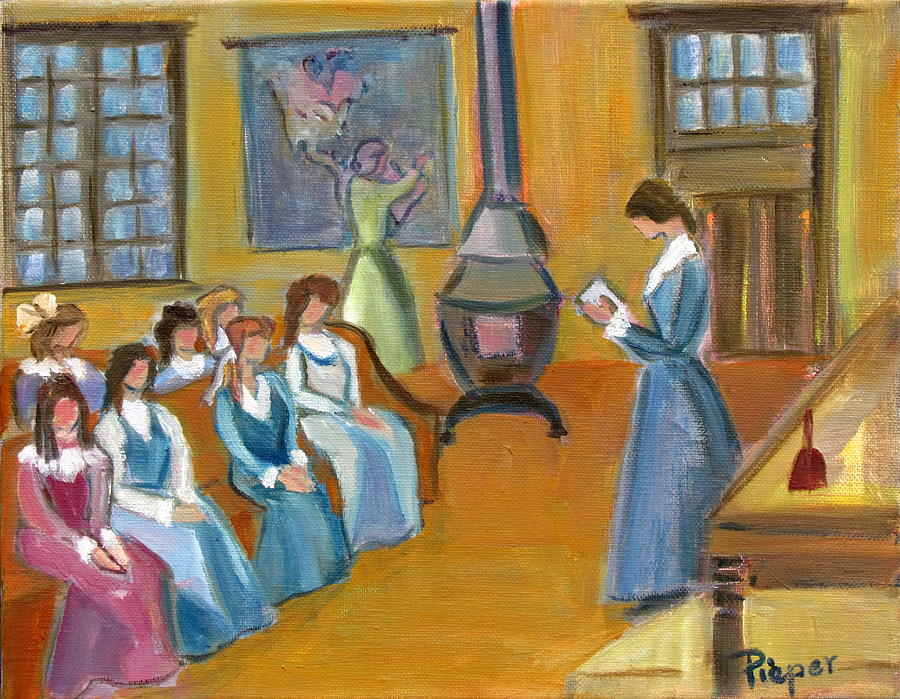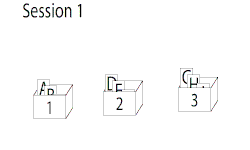Leitner system
In the Leitner system, correctly answered cards are advanced to the next, less frequent box, while incorrectly answered cards return to the first box.
An alternative method where incorrect answers are only moved back by one box
The Leitner system is a widely used method of efficiently using flashcards that was proposed by the German science journalist Sebastian Leitner in the 1970s. It is a simple implementation of the principle of spaced repetition, where cards are reviewed at increasing intervals.
MethodEdit
In this method flashcards are sorted into groups according to how well the learner knows each one in the Leitner's learning box. The learners try to recall the solution written on a flashcard. If they succeed, they send the card to the next group. If they fail, they send it back to the first group. Each succeeding group has a longer period of time before the learner is required to revisit the cards. In Leitner's original method, published in his book So Lernt Man Lernen, the schedule of repetition was governed by the size of the partitions in the learning box. These were 1, 2, 5, 8 and 14cm. Only when a partition became full was the learner to review some of the cards it contained, moving them forward or back depending on whether they remembered them.
ExamplesEdit
Three boxesEdit
Animation of three sessions. Click to enlarge
Suppose there are 3 boxes of cards called "Box 1", "Box 2" and "Box 3". The cards in Box 1 are the ones that the learner often makes mistakes with, and Box 3 contains the cards that they know very well. They might choose to study the Box 1 cards once a day, Box 2 every 3 days, and the Box 3 cards every 5 days. If they look at a card in Box 1 and get the correct answer, they "promote" it to Box 2. A correct answer with a card in Box 2 "promotes" that card to Box 3. If they make a mistake with a card in Box 2 or Box 3, it gets "demoted" to the first box, which forces the learner to study that card more often.
The advantage of this method is that the learner can focus on the most difficult flashcards, which remain in the first few groups. The result is, ideally, a reduction in the amount of study time needed.
Proficiency levelsEdit
This example uses 5 proficiency levels and 12 decks of flash cards. Cards at Proficiency Level 1 are reviewed at every learning session; those at Level 5 are retired and no longer in use. Those at Levels 2, 3, and 4 are reviewed every 2nd, 3rd, and 4th session, respectively.
Learning sessions are numbered from 0 to 9, then the numbering starts over again (that is, 0, 1, 2, ... 8, 9, 0, 1, 2 ...). Cards at Level 1 are in Deck Current; those at Level 5 are in Deck Retired; all other cards are in 1 of these 10 "progress" decks, each of which begins with a title card sporting 4 digits:
0-2-5-9
1-3-6-0
2-4-7-1
3-5-8-2
4-6-9-3
5-7-0-4
6-8-1-5
7-9-2-6
8-0-3-7
9-1-4-8
If a learner is successful at a card from Deck Current, it gets transferred into the progress deck that begins with that session's number. (For example, success at a card during Session 6 transfers it from Deck Current to Deck 6-8-1-5.) Cards from that deck are reviewed whenever a number from the deck title matches the session number. (For example, cards from Deck 6-8-1-5 will be reviewed again at Sessions 8, 1, and 5.) If a learner has difficulty with a card during a subsequent review, the card is returned to Deck Current; otherwise it stays in its progress deck. When a learner is successful at a card during a session that matches the last number on the deck (for example, Session 5 for Deck 6-8-1-5), that card goes into Deck Retired, and the title card for that progress deck is freed up for use at the following session.
Automation
Last edited 6 months ago by Aaronjwheeler
RELATED ARTICLES
a tool for systematic learning
spaced repetition software
Content is available under CC BY-SA 3.0 unless otherwise noted.












